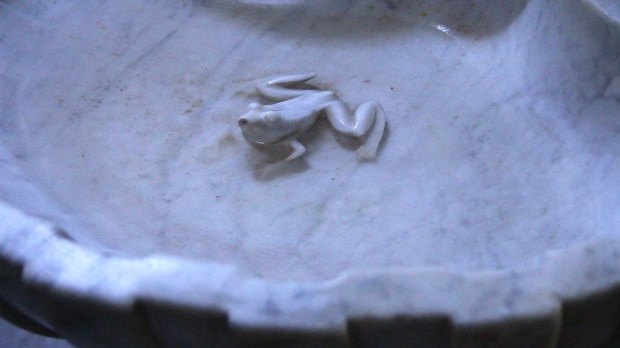Lenten Campaign 2025
This content is free of charge, as are all our articles.
Support us with a donation that is tax-deductible and enable us to continue to reach millions of readers.
An astonishing frog is carved in the marble of a holy water font in the Basilica of St. Paul in Narbonne, France. It has been there since the Renaissance. But what earned the frog its place in the stone? There are many stories about the frog that vary depending on who’s telling them, as is often the case when unusual things appear. But the marble frog is very real, in this church built in the 12th and 13th centuries.
The oldest legend
The oldest tradition relates that St. Paul Sergius, who came from Asia Minor in the 3rd century, decided to evangelize the fishermen of Lac de Bages. The fishermen mocked him, drove him away, and ordered him to use a block of stone as a boat.
The first miracle: the stone started to float. The missionary had no idea of how to steer a boat, much less one of stone! But then the second miracle happened: a frog jumped aboard and managed to lead him to the other side of the lake. To thank the frog, the priest — who would become the evangelizer of Narbonne and the first bishop of the Roman city — decided to immortalize his savior in a font in his church.
An annoyance, or a martyr?
Another story says that a frog was captivated by the singing of the faithful as it passed by the church of St. Paul. It entered the church, joining its (less harmonious) voice to that of the faithful. The archbishop asked God to turn the frog to stone, which he did, rendering him mute.
Yet another story (kinder to frogs) recounts that a young Christian woman, who was to have married the emperor Justinian, refused to renounce her faith. She was condemned to death by drowning. When cast into the water, she is said to have turned into a frog. The sculpture in the stoup is supposedly a reminder of the event.
The missing leg
If you look closely at the frog, you’ll see it’s missing a leg. Frédéric Mistral, in Mémoires et Récits, tells the story of an apprentice sculptor known as Pignolet. He supposedly visited Narbonne but returned to his home without having seen the famous frog. His father forced him to make the long journey back to see the famous marble amphibian, which infuriated him. The Provencal poet recounts:
The rascal drew his mallet and his chisel from his pack, and bang! With one blow of the mallet he broke the frog… The holy water, suddenly tinged with blood, turned red, they say… And that’s how the Narbonne frog perished.
So many stories for one little frog!
While it was certainly the first frog to be carved in a holy water stoup, the Narbonne stoup frog is not the only one! The region is home to many others. If you look hard enough, you’ll find its younger siblings in the churches of Fontfroide and Montjoi, both in Corbières.



